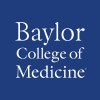Protracted Etoposide During Induction Therapy for High Risk Neuroblastoma (PEPI)
Neuroblastoma

About this trial
This is an interventional treatment trial for Neuroblastoma focused on measuring Neuroblastoma, Etoposide, Cisplatin, Adriamycin, Cyclophosphamide, Cytoxan
Eligibility Criteria
Inclusion Criteria:
Pts can be enrolled but receive standard etoposide bolus dosing based on clinical conditions at diagnosis (need for emergency intervention because of renal, neurologic, or airway compromise). Pts who meet all other eligibility criteria may also choose to participate in the clinical trial w/o receiving the upfront window protracted dosing of etoposide; these children will receive standard etoposide bolus dosing.
Less than 18 yo at diagnosis
DIAGNOSIS Neuroblastoma or ganglioneuroblastoma verified by histology and/or demonstration of clumps of tumor cells in bone marrow with elevated urinary catecholamine metabolites.
Pts with newly diagnosed neuroblastoma and age 365 or more days with the following: * INSS Stage 2a/2b with MYCN amplification , AND unfavorable pathology * INSS Stage 3 with MYCN amplification AND/OR unfavorable pathology
Pts with newly diagnosed neuroblastoma with INSS Stage 4 are eligible with the following: * Age more than 18 months (greater than 547 days) regardless of biologic features * Age 12 to 18 months (365-547 days) with any unfavorable biologic feature (MYCN amplification, unfavorable pathology and/or DNA index equal to 1) or any biologic feature that is indeterminant/unsatisfactory/unknown.
Pts with newly diagnosed neuroblastoma and age less than 365 days with INSS Stage 3, 4, 4S neuroblastoma with MYCN amplification (more than 10).
Pts 365 days or more initially diagnosed with INSS stage 1, 2, 4S who develop distant metastatic disease (meet criteria for INSS stage 4).
Pts may have had no prior systemic therapy except:
- Localized emergency radiation to sites of life threatening or function-threatening disease
- No more than one cycle of chemotherapy according to the intergroup low or intermediate risk neuroblastoma studies prior to determination of MYCN amplification and histology.
TIME FROM DIAGNOSIS Pts must be entered on this study - Within 3 weeks of diagnosis - After recovery from only 1 cycle of chemo on low/intermediate risk NB therapy, - Within 3 weeks of progression with widely metastatic tumor for INSS stage 1, 2, 4S if they received no prior chemotherapy.
HEMATOPOIETIC FUNCTION
- ANC 750/µL or more
- Plt 75,000/µL or more
- or bone marrow involvement with tumor.
LIVER FUNCTION Pts must have adequate liver function defined as
- Direct Bilirubin 1.5 mg/dL or less
- AST and ALT 5 x ULN or less
Pts of childbearing potential must practice an effective method of birth control while on study.
Exclusion Criteria:
Patients who do not meet inclusion criteria.
Patients who are pregnant or lactating are not eligible.
EXCLUSION CRITERIA UPFRONT WINDOW Patients can be enrolled onto Stratum 1 but receive standard etoposide bolus dosing based on clinical conditions at diagnosis. Patients who meet all other eligibility criteria may also choose to participate in the clinical trial without receiving the upfront window protracted dosing of etoposide; these children will receive standard etoposide bolus dosing.
Patients whose tumor requires emergency intervention because of spinal cord compression, CNS compromise, or airway compromise.
Patients requiring dialysis.
If the patient and/or the patient's legally authorized guardian chose to participate in the clinical trial but chose to not participate in the phase II upfront window.
Sites / Locations
- Texas Children's Hospital
Arms of the Study
Arm 1
Arm 2
Experimental
Active Comparator
Protracted Oral Etoposide
IV Bolus Etoposide
Protracted oral etoposide for cycles 1, 2 and 4 of induction. Etoposide will be given in combination with IV cisplatin (a standard of care agent). If a subject does not respond after cycle 2, cycle 4 will be bolus etoposide in combination with IV cisplatin. All patients will receive Adriamycin and cyclophosphamide for cycle 3 and 5 as a standard of care.
IV bolus etoposide in combination with IV cisplatin will be given for cycles 1,2, and 4 of induction chemotherapy for patients who are not eligible for the experimental arm (e.g.require emergent treatment) All patients will receive Adriamycin and cyclophosphamide for cycle 3 and 5 as a standard of care.
Outcomes
Primary Outcome Measures
Secondary Outcome Measures
Full Information
1. Study Identification
2. Study Status
3. Sponsor/Collaborators
4. Oversight
5. Study Description
6. Conditions and Keywords
7. Study Design
8. Arms, Groups, and Interventions
10. Eligibility
12. IPD Sharing Statement
Learn more about this trial
